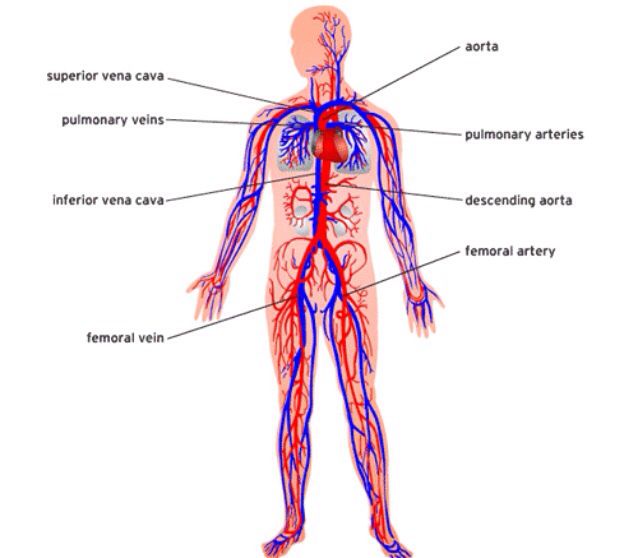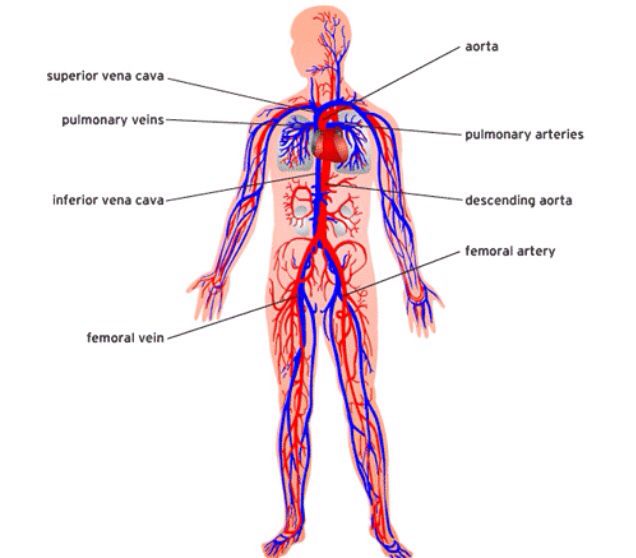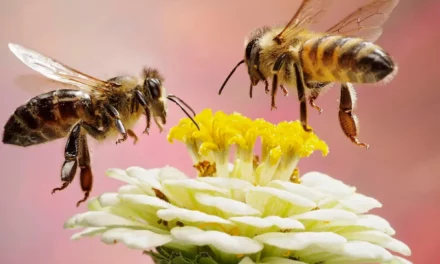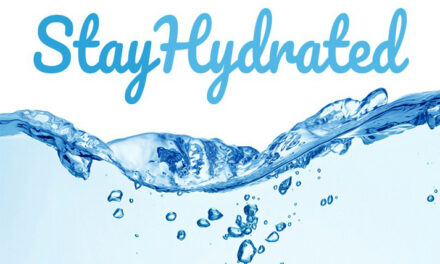Your heart and blood vessels make up the circulatory system. The main function of the circulatory system is to provide oxygen, nutrients and hormones to muscles, tissues and organs throughout your body. Another part of the circulatory system is to remove waste from cells and organs so your body can dispose of it.
Your heart pumps blood to the body through a network of arteries and veins (blood vessels). Your circulatory system can also be defined as your cardiovascular system. Cardio means heart, and vascular refers to blood vessels. In this blog, Pritish Kumar gives you an illustration of circulatory system of the human body.
The circulatory system provides blood to all the body’s tissues so they can function.
FUNCTION
What does the circulatory system do?
The circulatory system’s function is to move blood throughout the body. This blood circulation keeps organs, muscles and tissues healthy and working to keep you alive.
The circulatory system also helps your body get rid of waste products. This waste includes:
- Carbon dioxide from respiration (breathing).
- Other chemical byproducts from your organs.
- Waste from things you eat and drink.
How does the circulatory system work?
Your circulatory system functions with the help of blood vessels that include arteries, veins and capillaries. These blood vessels work with your heart and lungs to continuously circulate blood through your body. Here’s how:
The heart’s bottom right pumping chamber (right ventricle) sends blood that’s low in oxygen (oxygen-poor blood) to the lungs. Blood travels through the pulmonary trunk (the main pulmonary artery).
Blood cells pick up oxygen in the lungs.
Pulmonary veins carry the oxygenated blood from the lungs to the heart’s left atrium (upper heart chamber).
The left atrium sends the oxygenated blood into the left ventricle (lower chamber). This muscular part of the heart pumps blood out to the body through the arteries.
As it moves through your body and organs, blood collects and drops off nutrients, hormones and waste products.
The veins carry deoxygenated blood and carbon dioxide back to the heart, which sends the blood to the lungs.
Your lungs get rid of the carbon dioxide when you exhale.
ANATOMY
What are the circulatory system parts?
The parts of your circulatory system are your:
- Heart, a muscular organ that pumps blood throughout your body.
- Blood vessels, which include your arteries, veins and capillaries.
- Blood, made up of red and white blood cells, plasma and platelets.
What are the circulatory system circuits?
Your circulatory system has three circuits. Blood circulates through your heart and through these circuits in a continuous pattern:
The pulmonary circuit: This circuit carries blood without oxygen from the heart to the lungs. The pulmonary veins return oxygenated blood to the heart.
The systemic circuit: In this circuit, blood with oxygen, nutrients and hormones travels from the heart to the rest of the body. In the veins, the blood picks up waste products as the body uses up the oxygen, nutrients and hormones.
The coronary circuit: Coronary refers to your heart’s arteries. This circuit provides the heart muscle with oxygenated blood. The coronary circuit then returns oxygen-poor blood to the heart’s right upper chamber (atrium) to send to the lungs for oxygen.

circulatory system
What are the types of blood vessels?
There are three main types of blood vessels:
Arteries: Arteries are thin, muscular tubes that carry oxygenated blood away from the heart and to every part of your body. The aorta is the body’s largest artery. It starts at the heart and travels up the chest (ascending aorta) and then down into the stomach (descending aorta). The coronary arteries branch off the aorta, which then branch into smaller arteries (arterioles) as they get farther from your heart.
Veins: These blood vessels return oxygen-depleted blood to the heart. Veins start small (venules) and get larger as they approach your heart. Two central veins deliver blood to your heart. The superior vena cava carries blood from the upper body (head and arms) to the heart. The inferior vena cava brings blood up from the lower body (stomach, pelvis and legs) to the heart. Veins in the legs have valves to keep blood from flowing backward.
Capillaries: These blood vessels connect very small arteries (arterioles) and veins (venules). Capillaries have thin walls that allow oxygen, carbon dioxide, nutrients and waste products to pass into and out of cells.
What are the circulatory system organs?
Your heart is the only circulatory system organ. Blood goes from the heart to the lungs to get oxygen. The lungs are part of the respiratory system. Your heart then pumps oxygenated blood through arteries to the rest of the body.
How can I prevent circulatory system problems?
These steps can protect the health of your circulatory system:
- Aim for at least 150 minutes of physical activity every week.
- Eat a heart-healthy diet rich in vegetables and fiber and low in saturated fats and processed foods. Consider a Mediterranean-style diets or plant-based diet, as they appear to be the most heart healthy.
- Find healthy ways to ease stress.
- Maintain a healthy weight.
- Manage conditions like diabetes, high blood pressure and high cholesterol.
- Get help to quit smoking.
Reference
https://my.clevelandclinic.org/health/body/21775-circulatory-system










